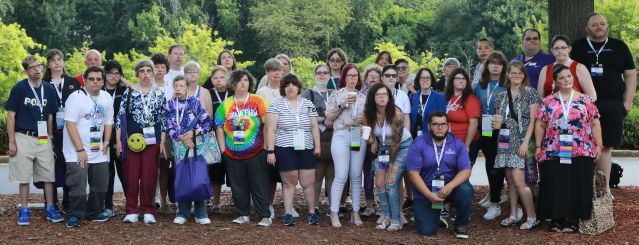Identity
Explaining Facial Difference: To Disclose or Not Disclose?
Stigma reduction must occur at the societal level.
Posted January 10, 2023 Reviewed by Ekua Hagan
Key points
- In new research, people with facial difference gave advice on handling disclosure.
- The most frequent advice was that people should have disclosure autonomy—that is, the choice of when and if to disclose.
- Talking about facial difference was empowering to some and helped them find community.
This post is part 2 of a two-part series.
Part 1 of this series described new research by myself and my colleagues that found that even though it might be “plain as the nose on their face,” people with facial differences are still expected to disclose or explain their condition to others. Disclosure styles ranged from telling no one to coming out proud. Part 2 describes participants’ advice for people with and without facial differences.

To Disclose or Not to Disclose?
When we asked interviewees their advice for others with facial differences, the answer was clear: It should be up to the individual to decide whether or not to disclose. That is, give people autonomy to disclose or not, do not compel them. Parents of young children with facial differences often wonder if they should disclose for their children. Interviewees stressed that the child should be involved in this decision. Parents can model autonomous disclosure approaches by having open, frank conversations with the person with the facial difference about if, how, and when to disclose. Good advice from the facial difference organization Changing Faces is to prepare a few short phrases in advance to explain the facial difference so the person feels in control if they decide to disclose or advocate.
One interviewee consulted guidance from Changing Faces regarding job interviews. They recommended not disclosing in job applications because the focus should be on qualifications. If invited to an interview, a person with facial difference may opt to disclose before meeting the interviewers or at the beginning of the interview. Based on this guidance, she decided to disclose after she had been offered an interview but before the interview occurred so that the interviewers would not be distracted at the beginning of the interview. She felt this approach worked better than others she had tried in the past.
To Ask or Not to Ask?
Participants varied greatly in how they felt about facial difference–related questions from others. One interviewee said: “I think is the most courteous thing is to not stare and to not ask, like, I would just rather live in a world where people didn't ask, but people are so naturally curious.…If the first thing a potential new friend asks you is about your birthmark, they might not be worth your time.”
On the other hand, some welcomed interest, curiosity, and questions from others, seeing it as an opportunity to discuss their difference when it was otherwise hard to find a segue, and to address the elephant in the room. One lamented that discussions about facial differences were taboo, and that others were afraid to ask questions. To normalize discussions about facial differences, he chose to broadcast to fight this taboo. As with any personal question, a good rule of thumb is to wait until you know the person well enough to gauge if they will feel comfortable answering.
Empowerment and Community
Some felt their facial difference had an overall positive impact on their lives and noted how discussing facial differences can afford unique opportunities:
You never really think about being disabled as an advantage. Like, there are definitely some advantages when you talk about, especially the music industry. Like 20 years ago, if you were disabled, they didn't want anything to do with you…but now that society is changing, I think the music industry, they want to highlight more things now. So I think now is like a really good time to talk about these things.
After acquiring a facial difference from cancer, one interviewee asked his doctor if there were any support groups or mental health workers that could help him with cope, but the doctor was not aware of any. The interviewee turned to the Internet but struggled to find the right search terms. Eventually, he found the term “facial disfigurement,” which ultimately imparted identity, community, and a means to explain his appearance. “When you have language for who you are, it's empowering. And talking about it, it's empowering.” He since started support communities and activism.
Several interviewees felt most comfortable discussing their facial difference with others who had facial differences or disabilities, feeling solidarity and building community. Individuals also learned from each other and from facial difference organizations about navigating disclosure.
Fighting Public Stigma Is Key
The taboo nature of facial difference creates competing social pressures to not discuss facial difference but also to address curiosity and misunderstandings stemming from lack of awareness. Stigma reduction and public awareness must occur at the societal level, instead of placing the responsibility on the individual with a facial difference. As one interviewee said, “I think of all new situations as uncomfortable.…I'm ashamed and I have to make [others] feel comfortable.…But I feel like, if it was just known…then we can just move on.”
Participants felt that facial difference should be included in diversity, equity, and inclusion initiatives. They called for greater representation in media and all aspects of the community. Several interviewees were inspired by other activist movements fighting for minority rights, and called for increased activism for “face equality” as well. Participants hope for a day where facial differences are not taboo, and they can move through the world without stigma.
References
Bogart, K. R., Bryson, B. A., Plackowski, E. F., & Sharratt, N. D. (2022). “The elephant in the room”: Disclosing facial differences. Stigma and Health. Advance online publication. https://doi.org/10.1037/sah0000430




